Links and Thoughts #11 (November 2024)
– personal
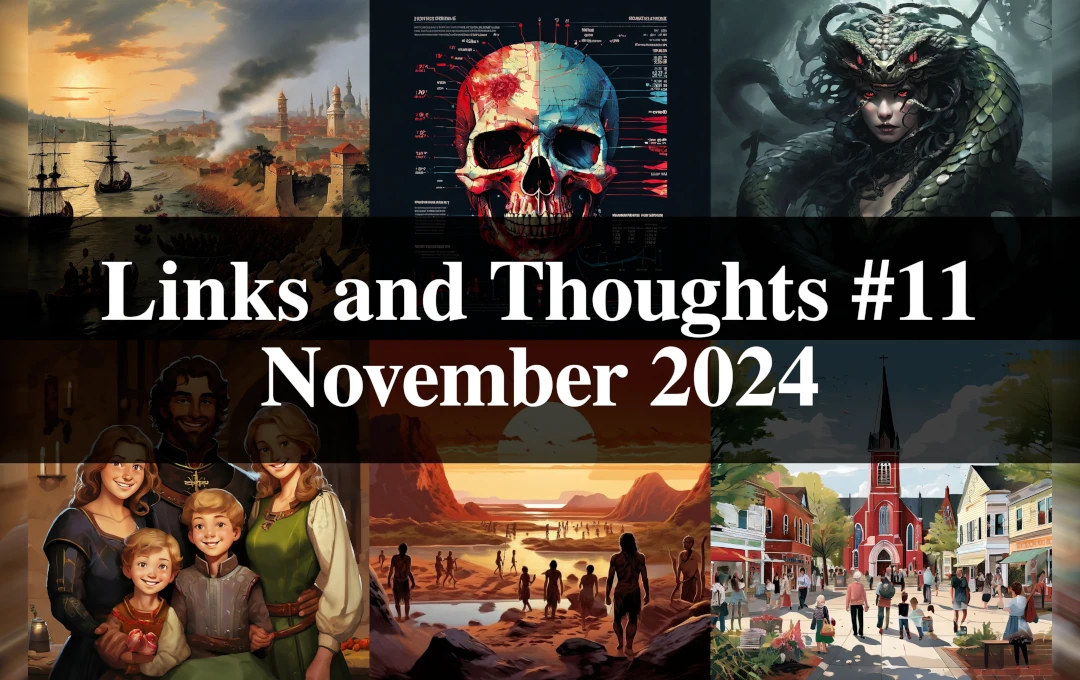
This month’s compilation brings: an article arguing that the threat of Ottoman invasion forced Catholic Europe to allow Protestantism to survive and thus indirectly contributed to the rise of modernity; a brief explanation of why and how intelligence is not exactly normally distributed; a summary of the latest data on the relationship between race, economics, and homicide in the United States; an article analyzing the archetype of the snake in the mythologies of several Eurasian cultures; a primer on epigenetics and why it’s not a mechanism for intergenerational trauma; an article about the rise of the nuclear family and the role it played in the European miracle; a podcast episode with geneticist David Reich about early human history and evolution; and an article about why libertarians should not merely oppose the state, but also actively support non-state institutions.
The Ottoman Origins of Modernity
- Link to article
- Author: Cremieux Recueil
- Date: 2024-09-19
- Source: Cremieux Recueil (Substack)
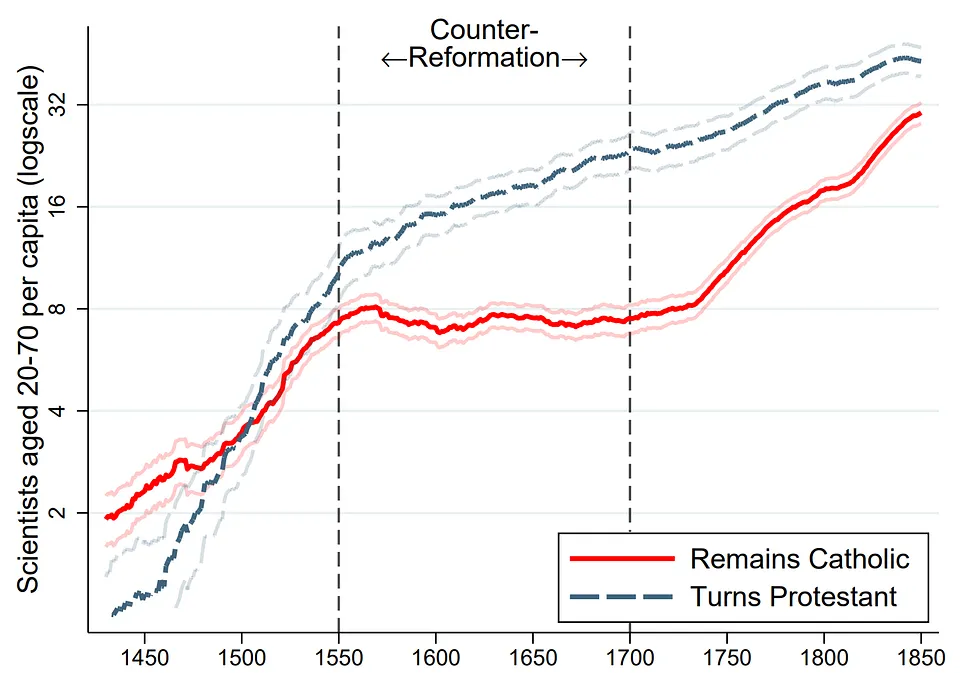
As the author clarifies halfway through the article, the title is intentionally facetious. The general thesis of the article is that the Ottoman Empire’s incursions into Southeastern Europe in the 16th century forced European rulers and the Catholic Church to allow the Protestant movement to survive, unlike previous heretical movements, and even to accommodate them in exchange for support against the invaders; then, due to the inherent pluralism of Protestant creeds and the insufficient coordination and effectiveness of most of the new Protestant political rulers, Protestants were more often than not unable to suppress scientific and intellectual progress like their Catholic counterparts; as a result, intellectual and scientific progress could flourish in Protestant regions, paving the way for the scientific and industrial revolutions and thus the unprecedented prosperity of the modern era. Cremieux makes a compelling case for his thesis, citing some solid historical literature as well as statistical data from several studies.
I’ll briefly add that Joseph Bronski wrote a much shorter post in response, The Eugenic Origins of Modernity, in which he argues that Cremieux’s article fails to consider an important factor, particularly in the part about the rise in scientists per capita in Protestant cities relative to Catholic ones: genetic evolution driven by differences in selection pressures between the two groups. I think it’s a plausible point, but it comes across as mere speculation compared to the heaps of data Cremieux presents.
Is intelligence really normally distributed?
- Link to article
- Author: Sebastian Jensen
- Date: 2024-11-04
- Source: sebjenseb (Substack)
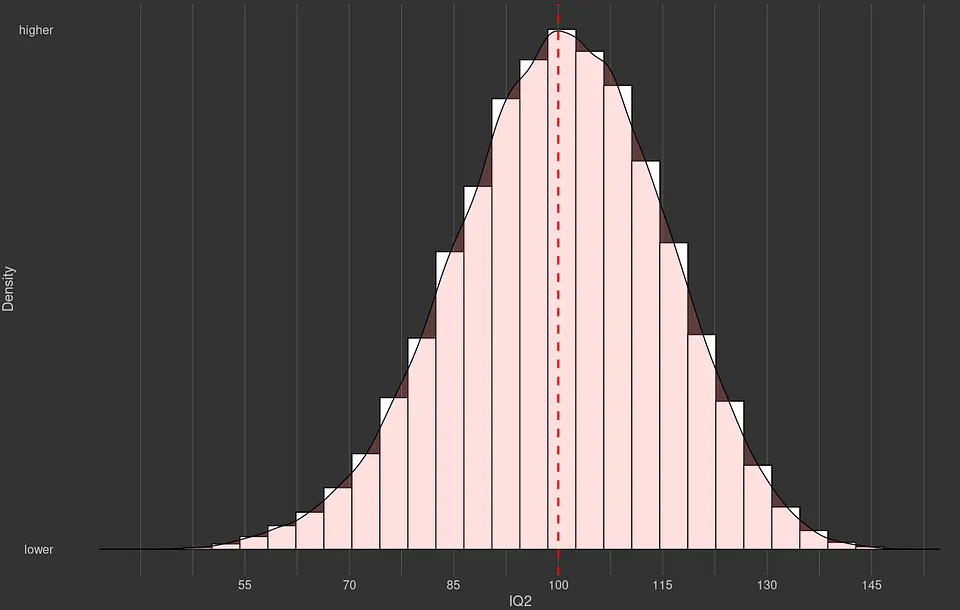
In this brief article, the author explains that intelligence, like many other human traits, does not have a truly normal distribution. In the case of intelligence, the distribution has a longer tail on the left side. As he explains, the intense long-term selection for intelligence in humans means that genetic variants with strong effects on it have largely reached fixation, and thus mutations that affect those alleles will usually reduce intelligence, resulting in more outliers below the average intelligence than above it. He then uses the large Project Talent dataset to show that this is indeed the case, even after making adjustments to discard the possibility that it could be an artifact of violations in normality within the individual subtests.
Race, economics and homicide in the United States: a summary
- Link to article
- Author: Inquisitive Bird
- Date: 2024-10-23
- Source: Inquisitive Bird (Substack)
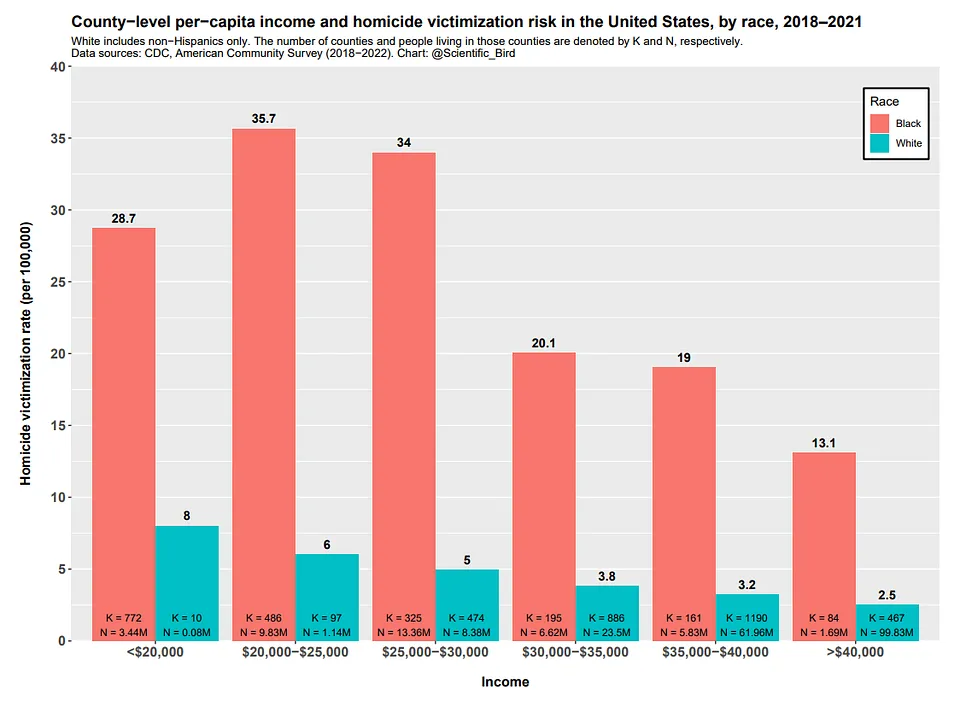
This article summarizes why economic factors cannot explain the large gap in homicide rates between blacks and whites in the United States, based on the latest data and research. First, regression results show that ethnic demographic factors are substantially more explanatory than economic factors. Second, large disparities persist even when comparing blacks and whites within the same income bracket. And finally, causally informative research shows that the causal economic effect on violent crime is marginal at best, and thus the observed correlation is actually the result of selection and, to a lesser extent, reverse causality (i.e., crime causes poverty, not the other way around).
The Sigma Female
- Link to article
- Author: DeepLeftAnalysis
- Date: 2024-10-30
- Source: Deep Left Analysis (Substack)

This is a fascinating article that analyzes the archetype of the snake that several Eurasian cultures have in common in their mythologies, as well as the analogous archetypes of scorpions and spiders. The author’s key point is that the snake archetype represents what he calls “sigma females”: women who rejected and subverted the society in which they lived and its values, and who therefore were considered immoral, dangerous, heretical, or demonic. Witches, whether in the literal sense or as a metaphor for spinsters, are the most notable examples of that type of woman.
You can’t take it with you: straight talk about epigenetics and intergenerational trauma
- Link to article
- Author: Razib Khan
- Date: 2022-12-18
- Source: Razib Khan’s Unsupervised Learning (Substack)
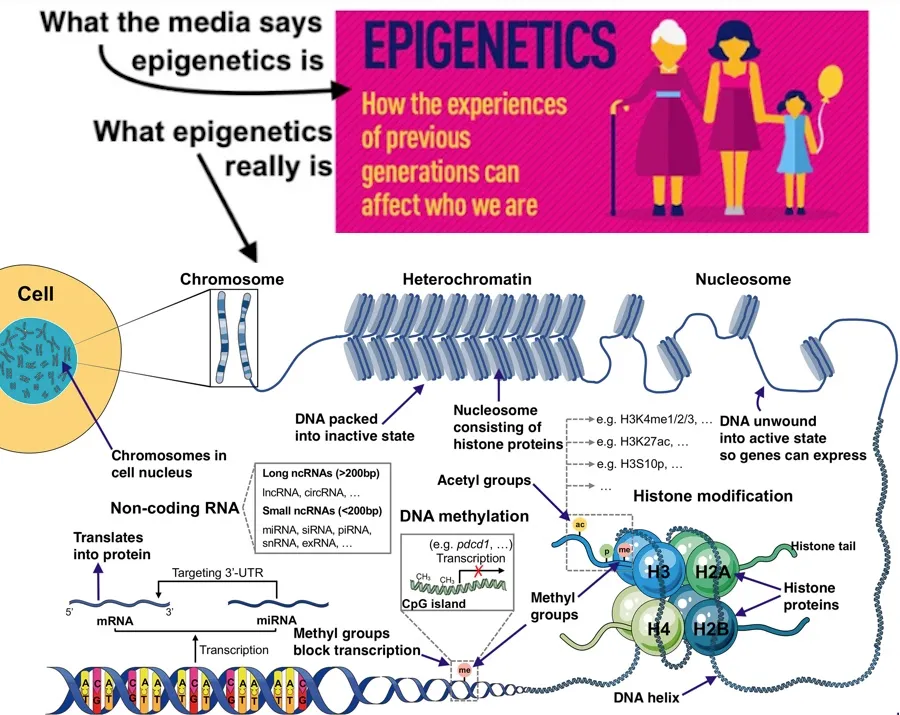
This is a primer for laymen on epigenetics, explaining what it really is about, how it works in general, and why it cannot plausibly be a mechanism for the transmission of trauma across generations, as popular media often irresponsibly paints it as. As Khan explains, epigenetics “encompasses the molecular mechanisms that determine how relevant sections of DNA’s single universal instruction manual are interpreted and applied uniquely in each specialized cell, as specific pages of the manual are consulted (or not) according to each cell’s role in your body.” Crucially, while epigenetic modifications are copied in conventional, non-reproductive cellular replication, they’re actually reset when sperm or eggs are created, as well as right after fertilization.
The Rise of the Western Nuclear Family and the “European Miracle”
- Link to article
- Author: Ryan McMaken
- Date: 2024-09-13
- Source: Mises Wire, Ludwig von Mises Institute
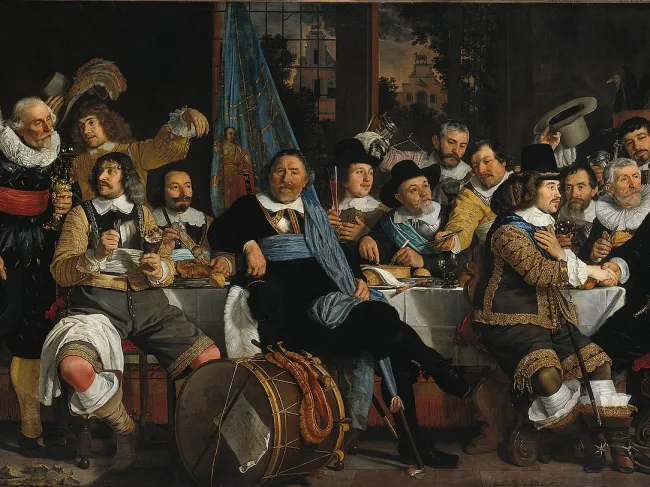
I often reference Ralph Raico’s essay on The European Miracle, in which he explains that the rise of Europe to economic prominence was in large part because its high degree of political decentralization and institutional competition in the Middle Ages allowed for an unprecedented degree of economic freedom. McMaken’s article is focused on the role of the European nuclear family in that process. As he explains, the nuclear family arose due to reforms that the Catholic Church implemented in the early Middle Ages, as well as economic and ideological factors. These new nuclear families, in turn, needed new organizations to provide the services that extended families and clan structures used to provide, fostering the rise of corporate organizations of different purposes. Those corporations tended to think of their own interests as distinct from those of the state and sought to protect them in Europe’s various legal institutions, acting as yet another brake on state power.
David Reich - How One Small Tribe Conquered the World 70,000 Years Ago
- Link to podcast video with transcript (Substack)
- Link to podcast video (YouTube)
- Host: Dwarkesh Patel
- Guest: David Reich
- Date: 2024-08-29
- Source: Dwarkesh Podcast (Substack)

In this fascinating podcast episode, Patel interviews David Reich, an eminent geneticist of ancient DNA, about several topics related to early human history and evolution: gene flow between archaic and modern human populations, how early modern humans dominated the world, the impacts of the bubonic plague and of agriculture, the frequent pattern of a group expanding into a territory and wiping out the existing population, etc. Reich is evidently very knowledgeable and eloquent, and he’s also humble enough to readily admit at many times what he doesn’t know. The podcast episode is from August 2024, so it doesn’t go into the findings of Reich’s blockbuster study published in September (and mentioned in my October post), in which he and his colleagues found strong evidence for recent evolution in West Eurasians using a large high-quality dataset of ancient genomes (which they made publicly available).
Why It’s Not Enough to Hate the State
- Link to article
- Link to audio version (YouTube)
- Author: Ryan McMaken
- Date: 2024-10-10
- Source:
- Article: Mises Wire, Ludwig von Mises Institute
- Audio version: Radio Rothbard podcast (Ludwig von Mises Institute) on YouTube

This article is adapted from McMaken’s lecture delivered at the Albuquerque Mises Circle in New Mexico on September 2024. In it, he explains the importance of private institutions—like families, churches, schools, businesses, and other voluntary organizations—that constitute civil society and function as competitors and bulwarks against the state, and how the state has systematically fought, constrained, and undermined those institutions precisely for that reason. Thus, he argues that libertarians should follow our historical predecessors in not merely opposing the state, but also actively supporting those non-state institutions in our daily work and our daily lives.